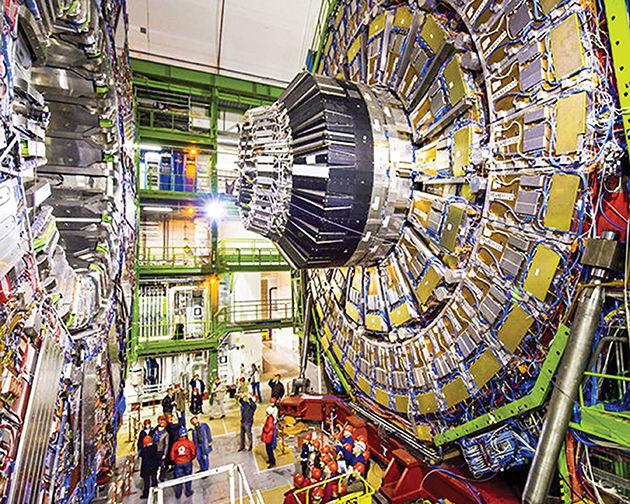The Large Hadron Collider — the world’s largest particle accelerator — was built just seven years ago, but a Chinese project already hopes to usurp the title.
Chinese scientists have been formulating plans to construct a “Higgs factory,” an estimated 50-100 kilometer circumference underground ring to smash electrons and positrons — two subatomic particles with the same mass but opposite charges — to create an accelerator seven times more powerful than the LHC. With a larger circumference and stronger magnets than the LHC, the proposed Chinese Electron Positron Collider, CEPC, would create more Higgs particles to give scientists a better understanding of fundamental physics.
Keith Ulmer, physics and astronomy assistant professor at Texas A&M, said to generate more Higgs particles, the new accelerator must be a lot stronger than the LHC accelerator.
“I don’t [think] there would be any point in building another machine that is the same as the LHC,” Ulmer said. “If you can build a machine with higher powered magnets or a bigger ring to reach higher energies, then you can access physics that the LHC can’t.”
Unlike the LHC, the proposed CEPC would smash electrons and positrons instead of protons. Alexx Perloff, physics graduate student whose work involves experiments done at the LHC, said there is a significant difference between the particles being collided.
“In an electron-positron collider, the events are cleaner,” Perloff said. “With the LHC, you get a higher energy collision, but the events are messy and there is some uncertainty as to which particles inside the proton are actually colliding.”
An electron-positron collider would allow scientists to study the Higgs particle through less subatomic debris. The higher energies would also create an abundant amount of Higgs particles, which would improve the understanding of fundamental physics.
Ulmer said the LHC has many other particles including quarks and gluons in the mix when scientists analyze data. The CEPC will have less parts colliding, which will yield to an improved, focused study on the Higgs particle.
Perloff said scientists who work with the LHC are considering ideas to expand the accelerator to even greater energies, no matter whether the Chinese project eventually reaches reality.
“CERN will continue,” Perloff said, referring to the European Organization for Nuclear Research. “In fact, China’s plan to build a 100 TeV collider is not the only plan of that kind. There are studies and plans to create an even bigger collider at CERN which would also be a 100 TeV collider. It’s not certain which plan will go ahead.”
Chinese scientists said in China Daily, China’s state-run paper, that they have completed the first phase of planning the design for the CEPC.
“We have completed the initial conceptual design and organized international peer review recently, and the final conceptual design will be completed by the end of 2016,” Wang Yifang, director of the Institute of High Energy Physics said in China Daily.
Perloff said if the Chinese accelerator is approved, its timeline would be difficult to estimate because the project is starting completely from scratch.
“For a 100 TeV collider in China, they have to build all the booster pieces, the actual tunnel, the machine and the detectors,” Perloff said. “It’s probably going to take longer than it took the LHC. Remember, the LHC was the beneficiary of much of the infrastructure from [previous construction work].”
Wherever the next particle accelerator is built, it will require nations to collaborate in order to operate this giant scale machine.
“The facility built at CERN has scientists from all over the world,” Ulmer said. “No matter where the next particle accelerator is built, it will have to be an international project.”
Chinese ‘Super Collider’ gains steam
November 23, 2015
Photo by PROVIDED
Chinese Accelerator
Donate to The Battalion
Your donation will support the student journalists of Texas A&M University - College Station. Your contribution will allow us to purchase equipment and cover our annual website hosting costs.























